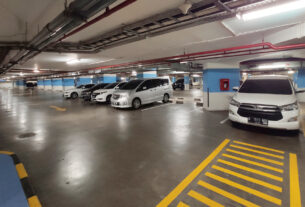Modern sunroof glass is a miracle of materials science, not just another window pane. Tempered glass is frequently used as the main material because of its remarkable strength and safety features. Tempered glass is heated to almost its softening point and then quickly cooled as part of a specific heat treatment procedure. The glass is much stronger than regular annealed glass because of this process, which produces tensile tension within and compressive stress on the outside. For those in need of sunroof repairs, Auto Repair in Canutillo, TX, offers expert services to ensure safety and durability.
But tempered glass alone isn’t enough for improved performance. Laminated glass, which is composed of two or more layers of glass joined by an interlayer, usually composed of polyvinyl butyral (PVB), is a common feature of sunroofs. By acting as a shock absorber, this interlayer offers exceptional impact resistance and keeps the glass from breaking entirely when struck.
Lightweight and Durable Frame Materials
A sunroof’s frame is essential to its overall visual appeal, structural soundness, and sealing capacity. With a move toward lightweight and high-strength materials, materials science has significantly advanced the design of sunroof frames. Because of its exceptional strength-to-weight ratio, resistance to corrosion, and ability to be recycled, aluminium alloys are a popular choice. Aluminium frames provide a sturdy framework without significantly increasing the vehicle’s weight, which enhances handling and fuel efficiency.
Some applications use carbon fiber-reinforced polymers (CFRP) for sunroof frames, especially in high-performance vehicles. CFRP is substantially lighter than aluminium and has considerably more strength and stiffness. CFRP frames offer remarkable performance advantages in terms of weight reduction and structural integrity, despite their higher cost.
Sealing and Bonding Technologies
The efficiency of a sunroof depends on the sealing and bonding technologies that guarantee a waterproof and secure assembly in addition to the glass and frame. Modern adhesives and sealants are essential for stopping water leaks, cutting down on noise, and preserving structural integrity. Glass and frames are frequently joined using polyurethane adhesives, which offer a robust, flexible, and long-lasting adhesion. These adhesives are made especially to resist the severe environmental factors that automobile parts must endure, such as vibration, UV rays, and temperature fluctuations.
Conclusion
In a similar manner, a tight barrier between the sunroof and the car’s roof is created using specialty rubber or silicone seals. To keep air and water out of the cabin, these seals are made to compress and fit the roof’s curves. Since these seals must retain their flexibility and sealing qualities over time, even after extended exposure to sunlight and a range of weather conditions, the chemistry of the materials used to make them is essential. The lifetime and functionality of the sunroof system depend heavily on the correct sealing and bonding.




